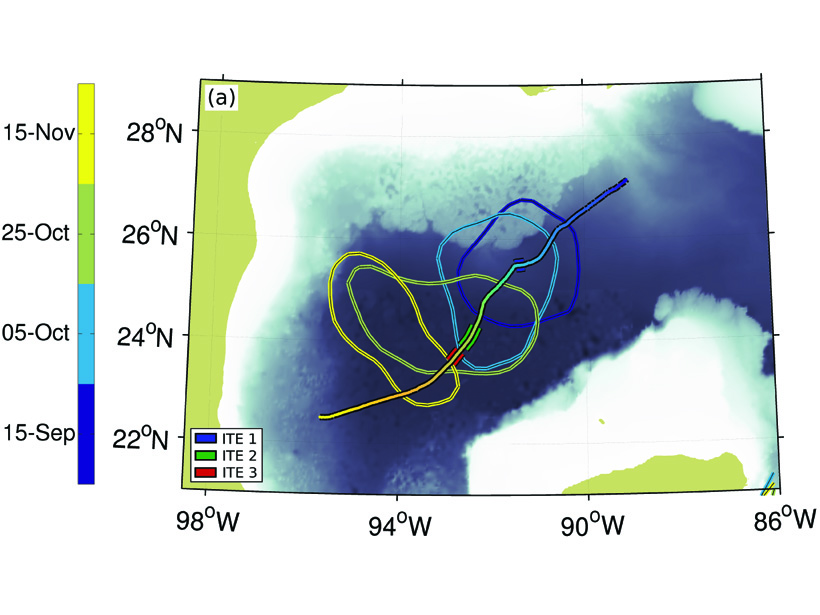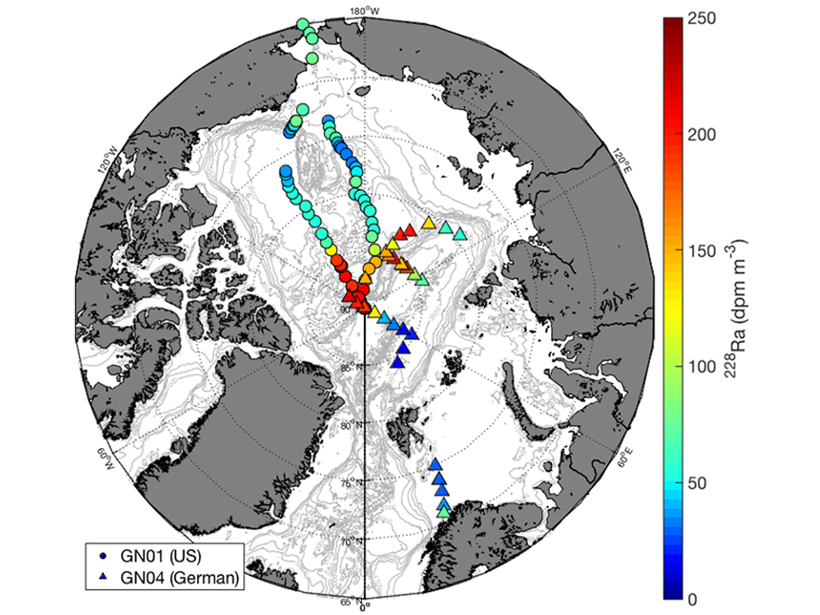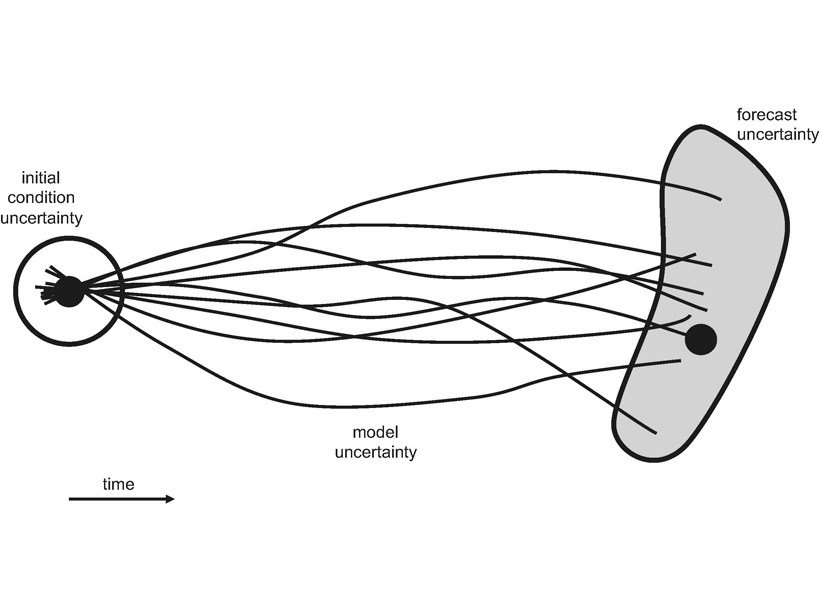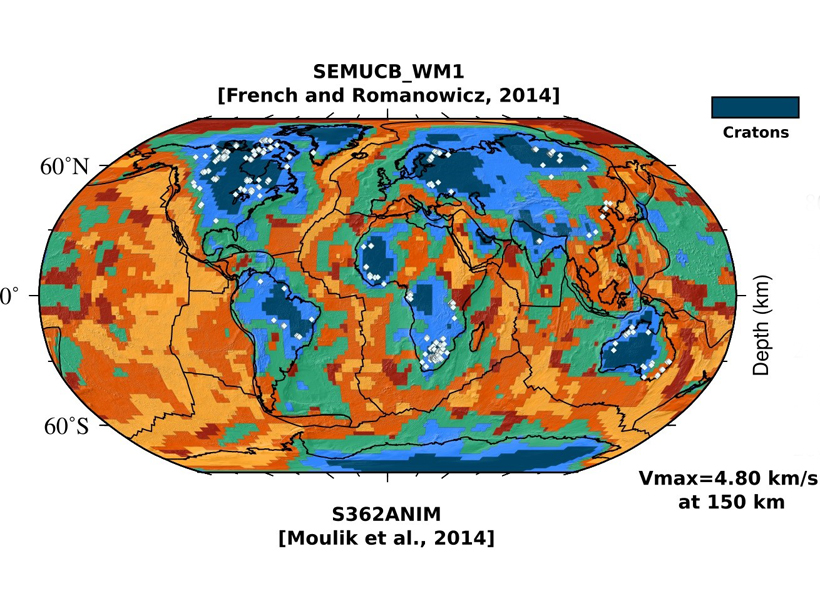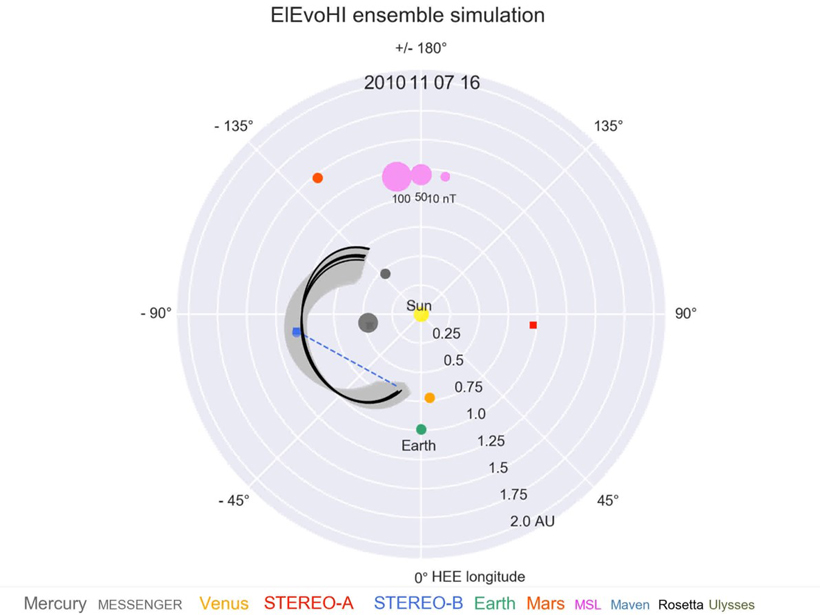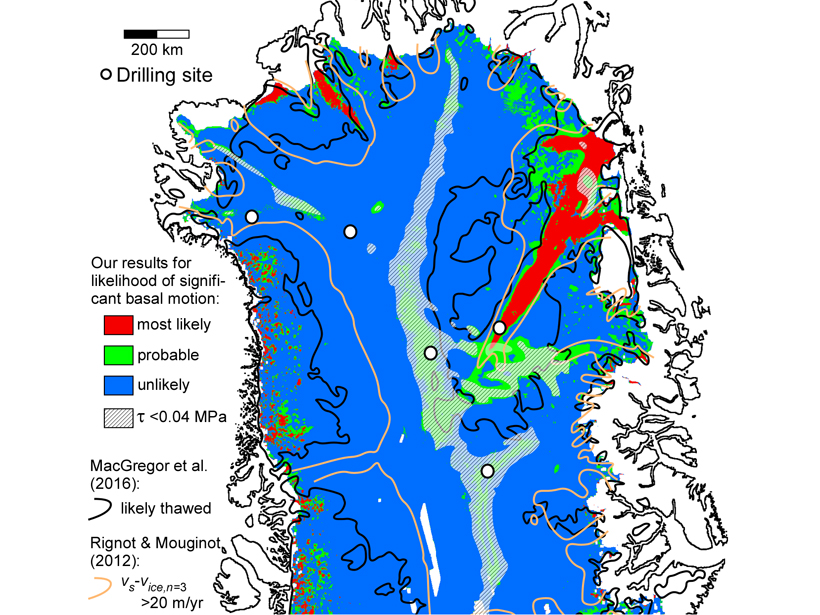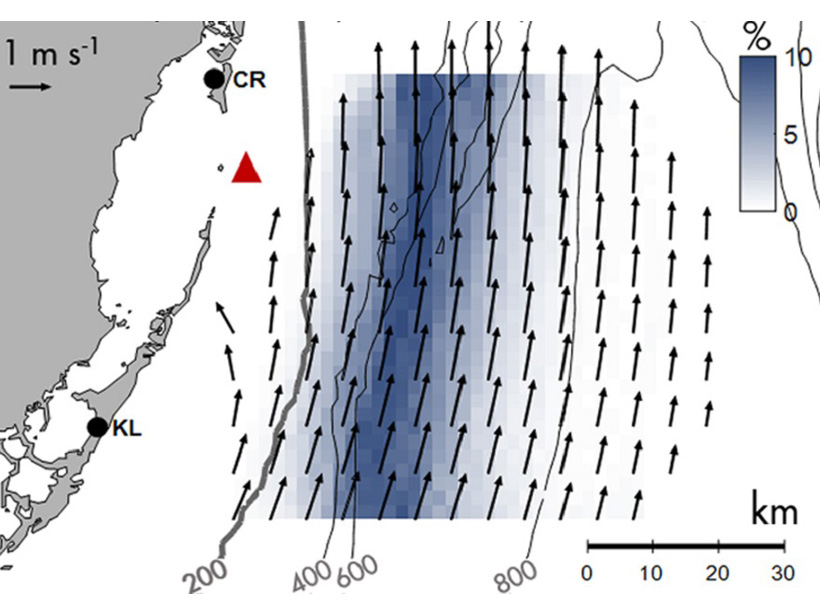The total sediment mass transported by flow under different sets of regimes is insensitive to the exact details of hydraulic forcing, but what matters is cumulative transport capacity.
Editors’ Highlights
Smaller Eddies Found Within Eddies
A glider survey observed three small eddies embedded within a larger scale eddy associated with the Loop Current in the Gulf of Mexico.
Increased Release Rates of Radium Isotopes on Arctic Shelves
A longer ice-free season on Arctic shelves causes an increase in sediment-water interaction.
Carbonate Melting Enhances Mantle CO2 Fluxes in Old Ocean Basins
The amount of CO2 segregated from the mantle by carbonate melting beneath old oceanic crust may equal that emitted along the mid-ocean ridge system, thereby contributing to the global carbon cycle.
Radar Data Highlights Areas Damaged by Wildfire and Debris Flows
Synthetic aperture radar data post-processing can be used to analyze changes in the landscape, providing a useful tool for disaster response.
Why Space Weather Needs Ensemble Forecasting
Weather forecasts combine many model predictions to create an ensemble that is more accurate than separate models, a technique now starting to be applied in space weather science.
Are Diamonds Ubiquitous Beneath Old Stable Continents?
Although rare at the Earth’s surface, diamonds may be commonplace at depths of 120 to 150 kilometers below the surface within the lithosphere of old continents.
Forecasting the Threat from the Sun
Ensemble techniques are opening a path toward space weather forecasts that give deeper understanding of the risk posed by each solar storm that approaches our planet.
Greenland Basal Melting May Be Considerably Less Than We Think
New observations of surface ice velocity over northern Greenland challenge current assumptions used in ice sheet models to model the deformation mechanisms that govern ice flow.
Energetics of Western Boundary Current Surface Flows Are Similar
Despite different wind forcing and air-sea heating conditions, the surface layer energetics of two Western Boundary Current systems in different ocean basins are surprisingly similar.


